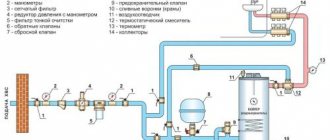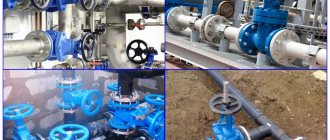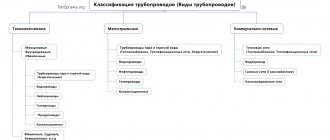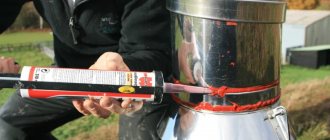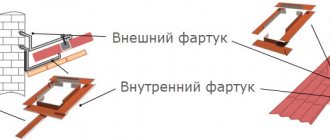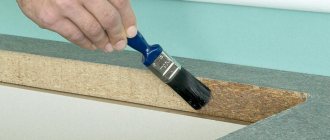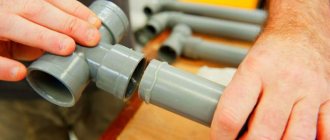The absence of cracks and crevices in the heating unit system is one of the mandatory requirements for its safe use. For these purposes, a high-temperature furnace sealant is used that is capable of maintaining insulating properties under extreme operating conditions.
Let's figure out how to choose the right composition, what to look for when purchasing, and what rules should be followed when applying sealed paste. To simplify the task of choosing, we will designate the five best offers from different manufacturers.
Classification of high-temperature furnace sealing compounds
Thermal insulating compounds are produced based on different substances. During construction and installation of stove structures and fireplaces, sealants are used, the main component of which is silicate or silicone. They have individual characteristics and are used in different places.
The first group includes heat-resistant compounds. They are able to withstand exposure to flame. The second type includes heat-resistant sealant for ovens. This composition has a significantly lower operating temperature compared to refractory substances.
See also: Catalog of companies that specialize in finishing materials and related work
Heat-resistant compositions from silicate components
This type of sealing material is made on the basis of sodium silicate. The substance has the appearance of a black viscous composition. After its contact with air, an inelastic layer is formed. Therefore, experts advise using heat-resistant sealant when the shrinkage of the brick stove structure is completed. However, manufacturers do not recommend applying it in places that are subject to vibration loads. Otherwise, the risk of cracks in it increases.
Heat-resistant composition Source 24aul.ru
Silicate sealants have the following characteristics:
- the greatest thickness of the sealing layer is 15 mm;
- permissible temperature during short-term exposure is from 1400 ℃ to 1500 ℃, and for a long time - 1300 ℃;
- curing time – maximum 15 minutes;
- Ambient temperature for use – from 1 ℃ to 40 ℃ (the value differs from different manufacturers);
- maximum linear deformation while maintaining the integrity of the hardened mass is 7%.
Heat-resistant sealant for ovens is a mass with good adhesive properties. To increase adhesion, manufacturers recommend first treating concrete, brick or steel surfaces with an abrasive material.
At the same time, not every heat-resistant sealing material is fire-resistant. Therefore, not all such substances can withstand exposure to fire. Only sealants with the appropriate designation have this ability.
Using heat-resistant black sealant Source vseinstrumenti.ru
Areas of use
Sealants are used at the joints of chimney pipes.
Fireproof paste material is used for several purposes:
- processing the connection of a ceramic or metal smoke exhaust duct;
- ensuring the quality of joining parts of sandwich chimneys;
- organizing a pipe outlet for smoke removal through the roof and rafters - the apron gaps are filled with sealant;
- waterproofing seams of stoves and chimneys;
- installation of cast iron parts (firebox, oven, hob) and repair work;
- restoring the strength of masonry mortar destroyed under high temperature loads;
- finishing the body of a stove or fireplace structure;
- gluing heat-resistant gaskets made of asbestos or graphite-asbestos cord on doors, ovens, stoves, valves.
Some pastes can be used when repairing fireclay masonry, but subject to a maximum temperature in the firebox of up to 1500 degrees.
For threaded connections
Repairing the seams of a solid fuel boiler is not complete without a heat-resistant sealant.
Heat-resistant silicate-based polymers withstand temperature changes from +1200 to +1500 degrees. This makes it possible to use them in areas of seams and damage to the heating system - boilers, pipes, electric and gas furnaces. The material acts as a gasket, which eliminates the release of carcinogens. The quality of adhesion to the surface helps protect against heat loss and fuel leaks.
For stoves and fireplaces
Synthetic silicone materials with high heat resistance are suitable for sealing joints in areas exposed to fire. They cannot be used to fill deep cracks, but they can be used for surface treatment with preliminary moistening of the surface.
The best option for repairing furnace units is glue that is not exposed to chemicals, oil and aggressive gases. Hybrids based on solvent and MS polymer provide a high-quality connection. When oxidized, the paste vulcanizes and hardens firmly.
For chimney pipes
Thermal sealant for brick chimneys on a silicate base allows you to seal joints and cracks. A high degree of moisture resistance ensures use in outdoor areas. The material is not suitable for smoke outlets subject to vibration.
Master-flash silicone heat-shrinkable tapes are used as a sealant for metal chimney pipes. The strip covering the joint melts when exposed to temperature. The seam becomes reliable and airtight.
Types of high-temperature sealing substances according to release form
Manufacturers mainly produce oven sealants for household use in tubes. They are used together with a construction gun. Manufacturers offer formulations in small tubes especially for treating small areas. The sealing material is squeezed out of them by simply pressing.
More often, single-component sealants are used for stoves and chimneys in residential buildings. They are used without any prior preparation. Such compositions require more time to dry compared to two-component substances. This allows you to correct errors made during installation.
Manufacturers produce two-component sealants in the form of a set consisting of a paste and a hardener. The components of the sealing material are mixed in accordance with the proportions specified in the instructions.
A two-component sealing agent is used in industrial facilities Source ad-cd.net
Liqui Moly Silicon-Dichtmasse schwarz
A good sealant with medium viscosity is offered by the German brand Liqui Moly. We can say that this is a classic of silicone sealants. It works great in tight joints due to its well-chosen consistency and adheres well to vertical surfaces. The film is formed in 6 minutes, and complete hardening takes about 8 hours, depending on humidity.
Black sealant works with any materials and is suitable for repairing engines, gearboxes, headlights, and repairing leaks in pipelines. It is resistant to oils, fuel, antifreeze, water, acids and alkalis, withstands temperatures from -40°C to +250°C, and for a short time up to +300°C. Craftsmen note the high quality of the sealant, the reliability of the connections, but especially highlight the ease of use: the composition is supplied not in a tube, but in a syringe. For this, the Germans have respect. The disadvantages include high cost and not the highest temperature stability: for the most thermally loaded components of modern engines it is rather weak.
Algorithm for selecting heat-resistant sealant
When selecting a sealant for a stainless steel chimney, brick or oven walls, its properties, recommended area of use and composition are taken into account. The operating temperature is also taken into account. The value of this characteristic is influenced by the base from which the sealant is made. When selecting a material, the operating conditions of the sealing composition are compared with its endurance temperature.
Important! To repair fireboxes, smoke exhaust ducts, and eliminate cracks near doors, only high-temperature sealant of 1500 degrees is used. If you use a composition with a low endurance temperature, it will collapse over time. Under high temperature exposure, delamination of the mineral filler occurs.
In addition, the composition should not contain volatile compounds that pose a health hazard. Therefore, they purchase products from trusted manufacturers. The packaging of a quality product always contains instructions for its use.
Manufacturers of fireproof sealing materials
There are quite a lot of different manufacturers of high-temperature sealants on the repair and construction market, of which the most popular on the domestic market are the following:
Penosil . This company produces both heat-resistant and heat-resistant sealing products. The heat-resistant material is a red silicone acid paste that is stable at temperatures up to 300 °C. In contrast, the heat-resistant variety, labeled Penosil-1500, is a black material whose maximum operating temperature reaches 1500 °C.
Tytan . The Polish company Selena Group produces its heat-resistant products under this brand. Sealants of this brand can withstand temperatures up to 1250 °C. In addition, due to the presence of a fiberglass mixture, they have excellent smoke and gas resistance, as a result of which they are in high demand among professionals.
Soudal C. This is a Belgian company that produces a wide range of sealing materials, including high-temperature ones (for example Soudal Calofer, Fix All, etc.).
High-temperature sealants are an indispensable item when arranging chimney structures for stoves or fireplaces. They have many important advantages, but at the same time they also have many features, and therefore, before purchasing a specific material, you should carefully familiarize yourself with its characteristics and recommendations of experts. This will allow you to avoid miscalculations and mistakes and make the best choice in which the tightness of the chimney structure will be ensured in the best possible way.
Briefly about the main thing
Heat-resistant sealants are used during the construction and installation of stove equipment in private residential buildings and bathhouses. The compositions are also used to repair heating devices. With their help, seams, joints, cracks in brickwork are sealed, and connections of elements of chimney systems are sealed.
Manufacturers produce high-temperature compositions based on silicate and silicone. The first type of material is black, and the second is brown-red. Sealing silicate and silicone substances also differ in their maximum operating temperature. It is 300 ℃ and 1500 ℃ respectively. When selecting sealants, be sure to take into account their endurance temperature and place of use.
Ratings 0
Advantages and disadvantages
Red mastic is suitable for chemically neutral materials.
The advantages and disadvantages of the material depend on its base. The advantages of high-temperature silicone include:
- good adhesiveness;
- resistance to wet environments;
- resistance to UV radiation;
- maintaining the integrity of the structure under abrasive influences;
- immunity to temperature fluctuations;
- ease of application.
Among the disadvantages is the impossibility of painting the surface and processing a wet base. Acidic modifications are not compatible with all types of materials.
The silicate heat-resistant composition has the following advantages:
- maintaining integrity when exposed to high temperatures;
- good strength indicator;
- no shrinkage;
- possibility of subsequent surface painting;
- long service life.
The disadvantages of the paste include lack of elasticity and minimal adhesion to a smooth surface.
